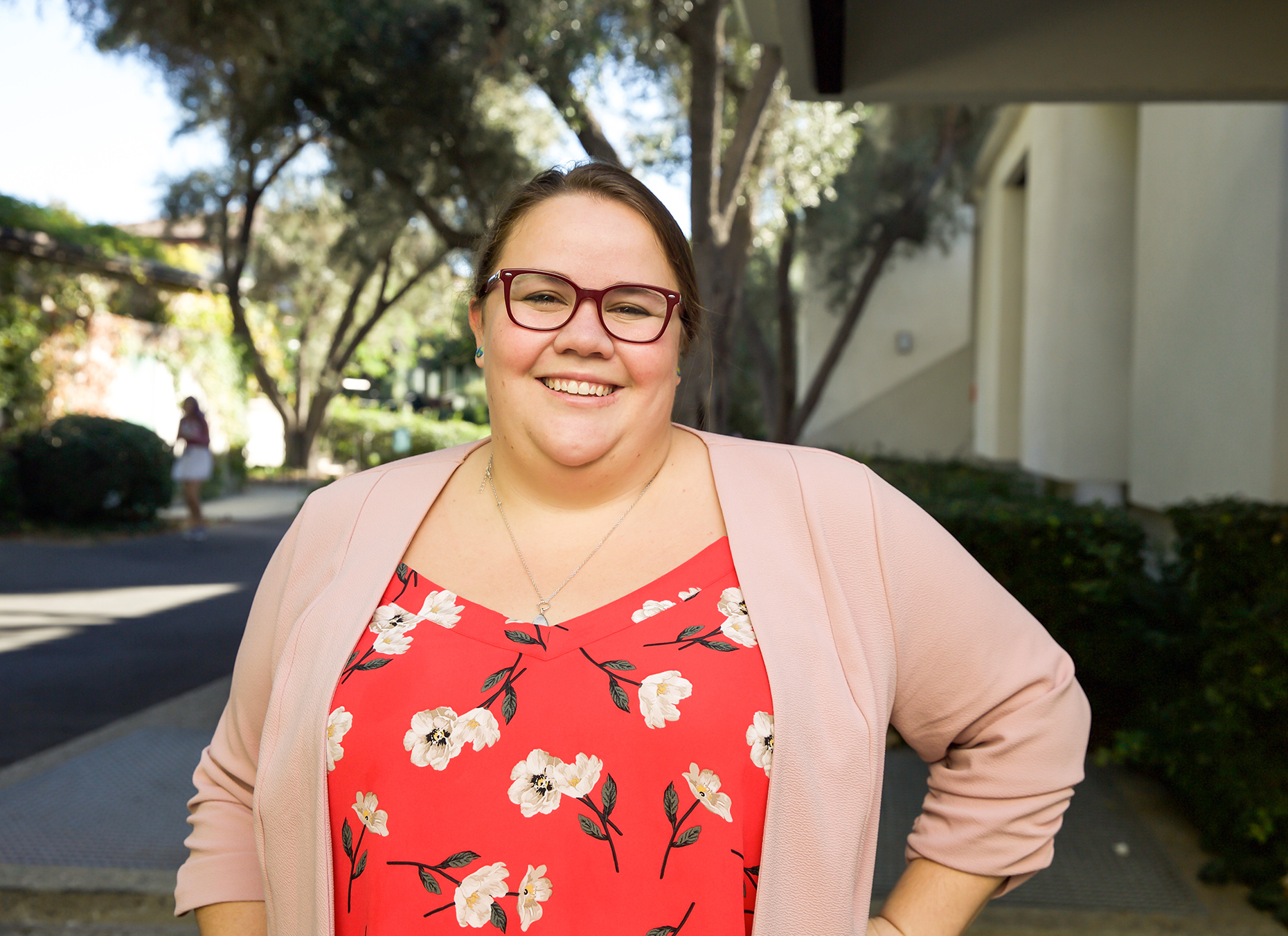
This fall, 11 new tenure-track faculty members joined Scripps College. As part of our ongoing series on Scripps’ faculty, the Office of Marketing and Communications recently sat down with Christina Edholm to discuss mathematics, biology, invasive species, and roller derby.
Marketing and Communications: Your specific academic focus is mathematical biology. How did you first become interested in this area of study?
Christina Edholm: In graduate school, I took an applied mathematics course, and I loved the fact that all this beautiful mathematics could be applied to real–world problems. I started looking at an invasive species, the diaprepes root weevil, and my co-advisors were a mathematician and an ecologist. Since then, I’ve become interested in different ways that mathematical biology can be used to examine current issues.
For example, my interest in epidemiology started five years ago, when I first participated in the Masamu mathematics program with Auburn University and went to the Southern Africa Mathematical Science Association conference, where part of the conference time is spent collaborating on research. My first year, in 2014, we focused on modeling Ebola, investigating what kind of role healthcare education plays in outbreaks, and how education campaigns could help manage future outbreaks. We’ve also worked on mathematical models for environmental pathogens, as well as models for elephant populations.
MC: The management of invasive species is one of your areas of research. How do you use mathematics to approach this topic? What are the real-world applications of this research?
CE: My advisors and I studied the diaprepes root weevil, an invasive species that affects citrus fruit. The pests are a big issue in Florida, and now have moved to California. People have studied various ways to bring this species down to an acceptable ecological threshold, focusing on different life stages. We wanted to focus on the larva stage of the pest, which attacks the roots of citrus trees. We first established a mathematical model that captured the invasive species life cycles using data from my advisor. Our model incorporated four life stages and their birth rate, survival rate, and death rate.
Once we had the model, our main goal was to apply control to the model to reduce the number of pests. We chose to use nematodes—environmentally friendly worms that prey on diaprepes root weevils, which can be purchased for farmers or home use—to combat an infestation. There are financial and ecological costs when an invasive species destroys citrus plants, so we need to balance the cost of purchasing the control and the loss of crops due to the pest. We’ve explored solutions using optimal and adaptive control theory, and we’re still looking at the benefits and detriments of different methods of control.
MC: What classes are you hoping to teach or develop at Scripps?
CE: I want to create classes that marry the concepts of mathematics with real-world applications, like computation and science communication. Science communication will help students explain their research to their peers and the general public. It would be fun to have a lower-level course that gives students the basic tools they need to talk about their work, as well as a course for upper-level students who want to use sophisticated mathematical techniques.
MC: Is there a fun fact about yourself that you’d like to share with the community?
CE: I played roller derby in grad school, and at one point our team was ranked 25th in the world! When we went to the playoffs, we played against a team from Helsinki.

